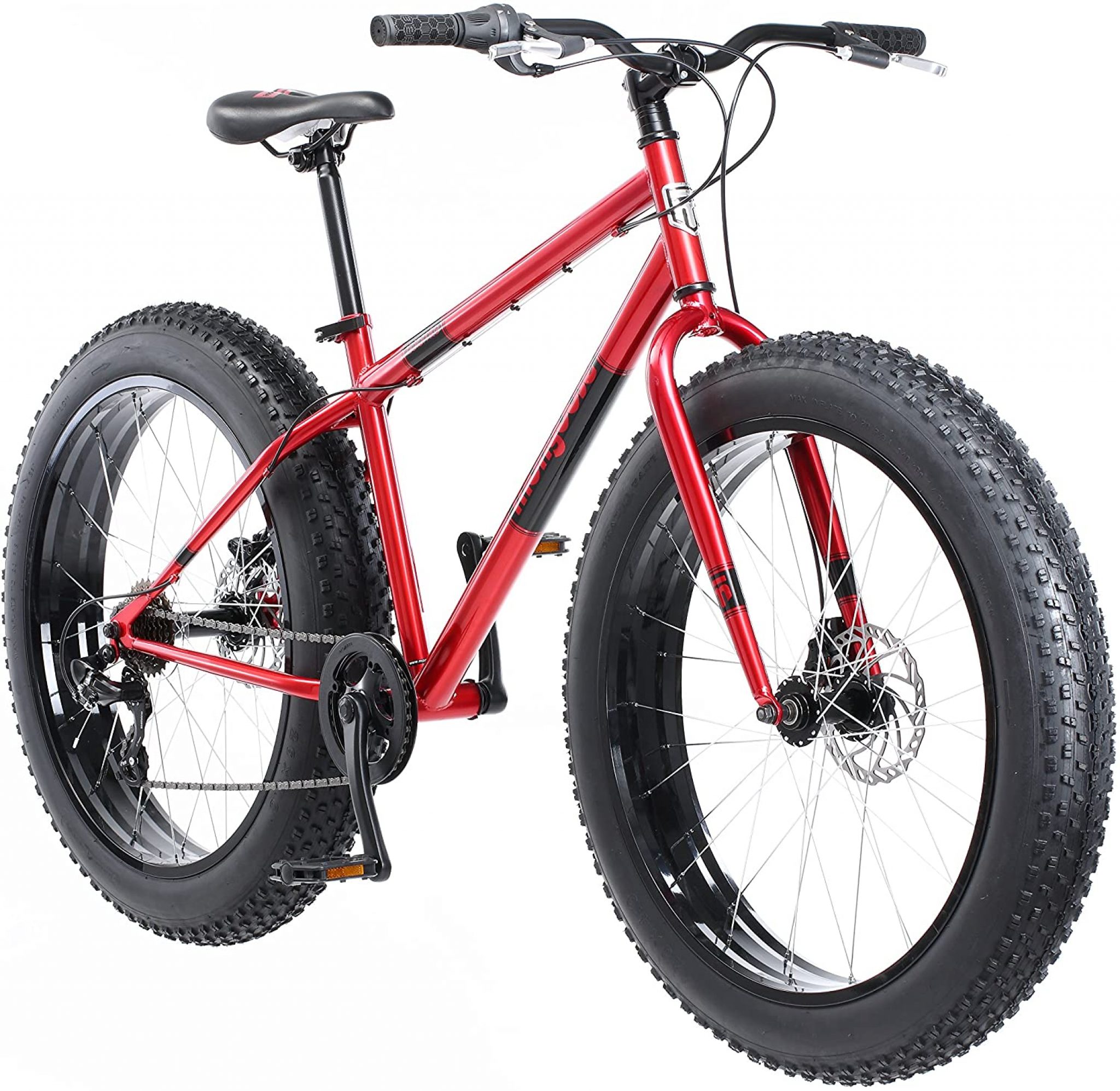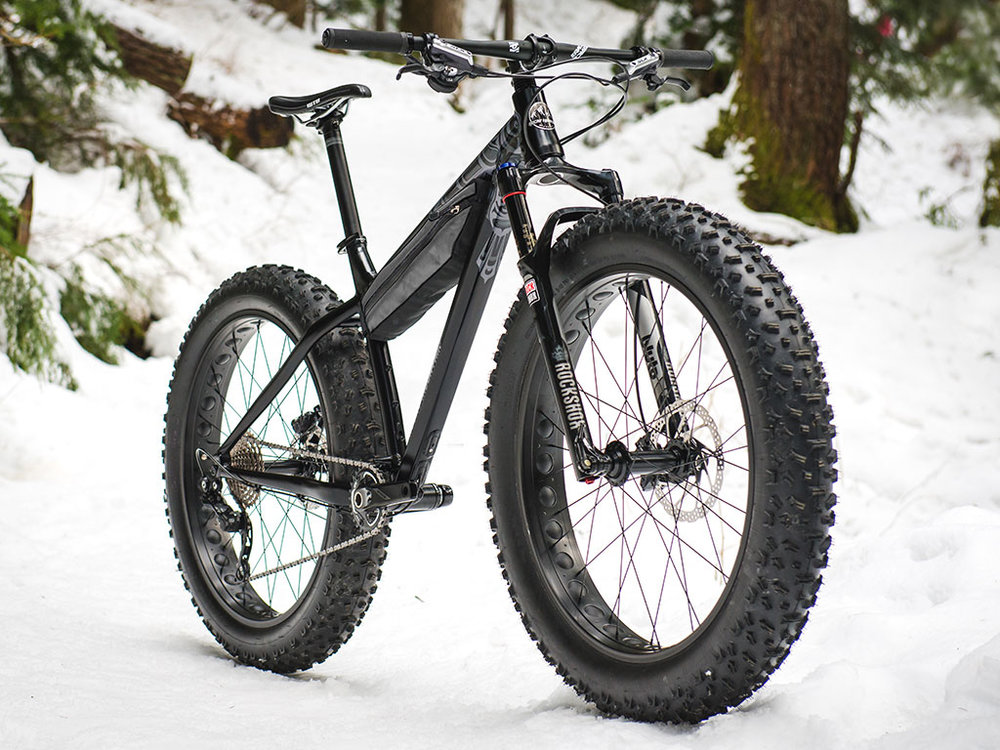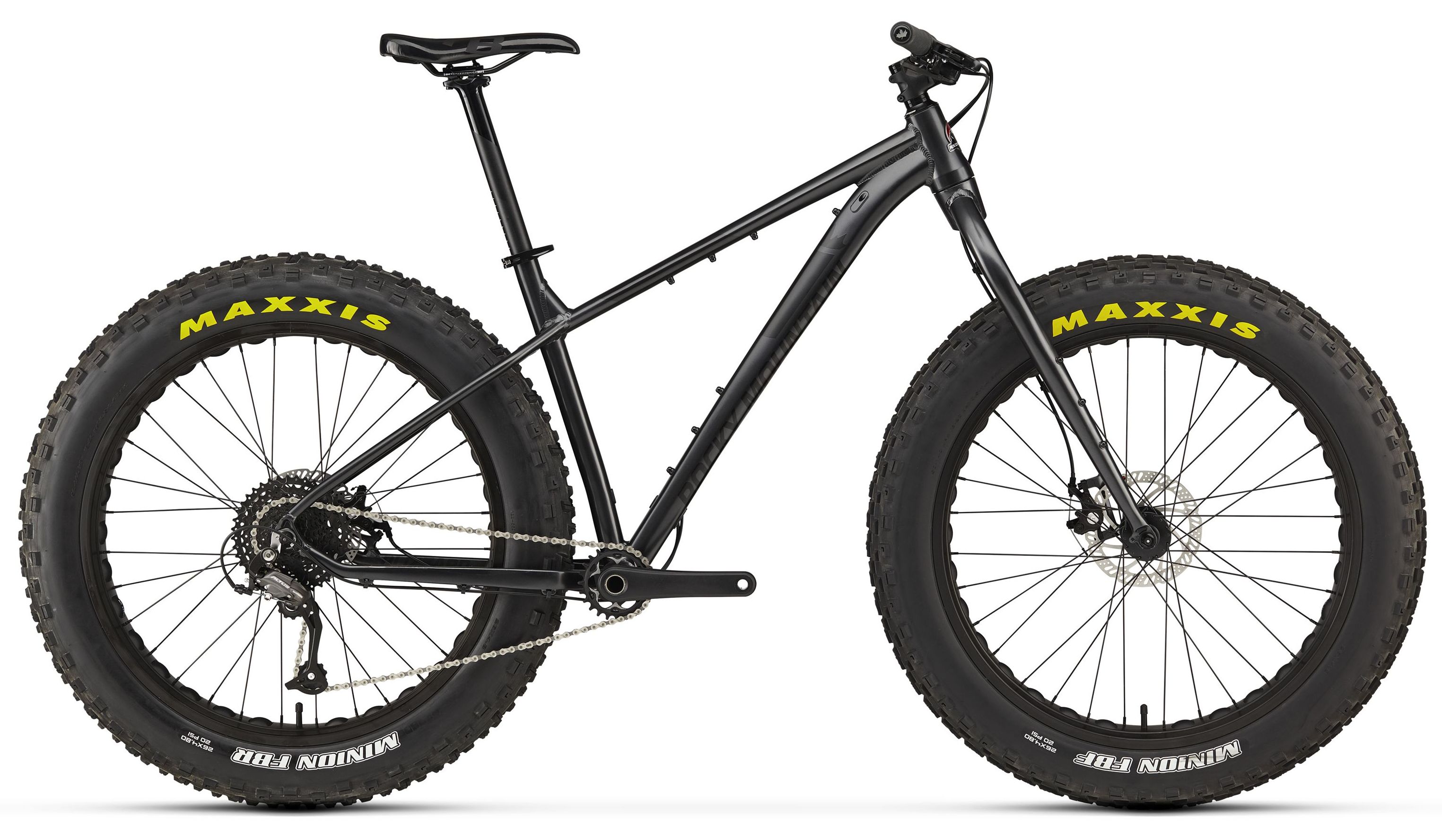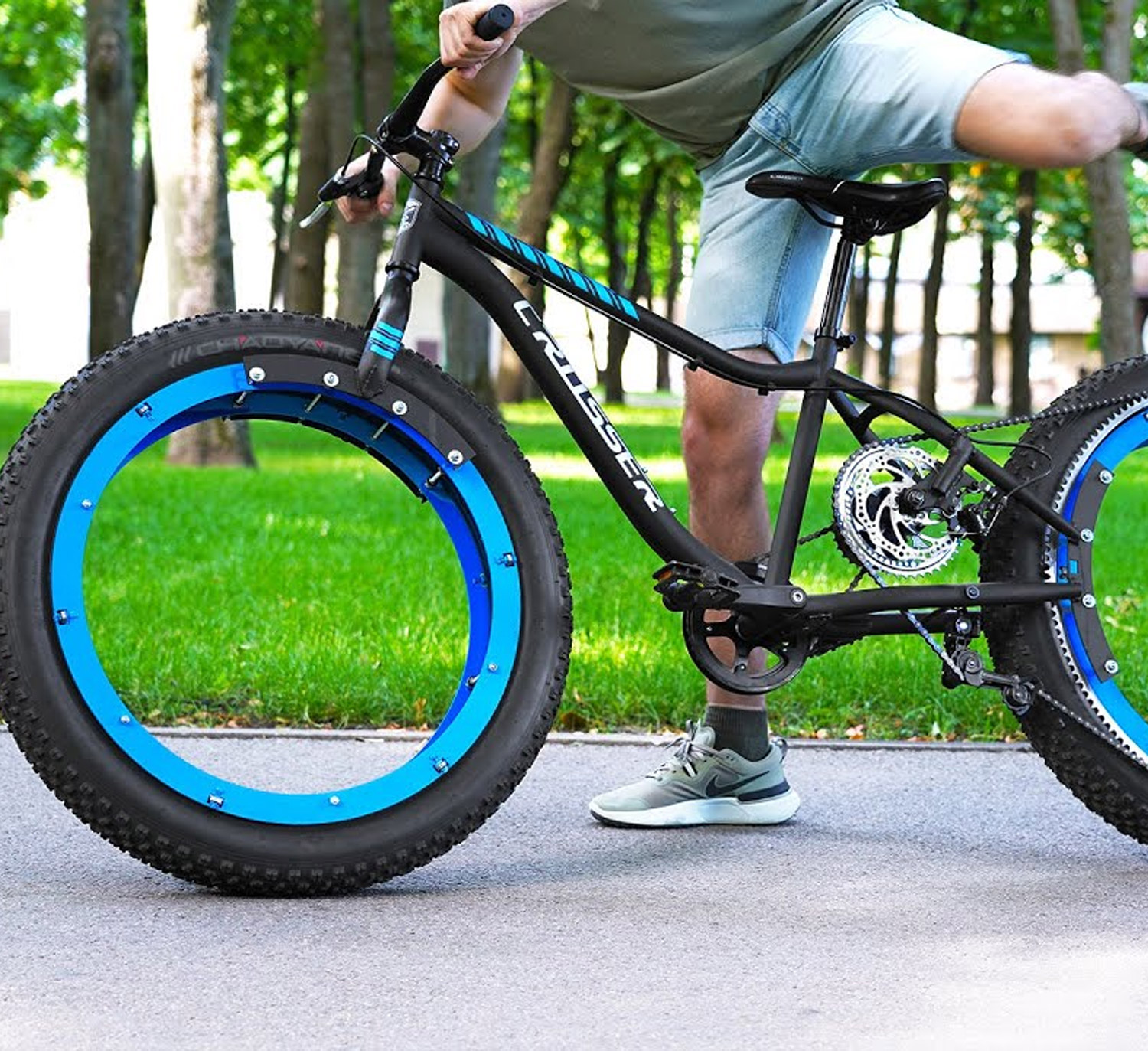Unraveling the World of Fat Tire Bikes: An Overview
Fat tire bikes, also known as fat bikes, have gained significant popularity in recent years due to their unique features and versatility in various terrains. These bikes are characterized by their oversized tires, typically 3.8 inches or wider, which provide better traction, stability, and shock absorption compared to traditional bikes. The growing interest in bikes with fat tires reflects a desire for adventure, exploration, and a smooth riding experience in diverse environments.
Identifying Top Fat Tire Bike Models: A Comprehensive Review
When it comes to bikes with fat tires, several high-quality models cater to various needs and preferences. The Mongoose Dolomite, for instance, is a popular choice for its durability and affordability. Featuring a steel frame, 26-inch wheels, and 4-inch wide tires, this bike is perfect for tackling diverse terrains, from sand to snow.
Another notable model is the Schwinn Mikko, which boasts an aluminum frame, 26-inch wheels, and 4-inch wide tires. Known for its lightweight design and smooth performance, the Mikko is an excellent option for riders who prioritize speed and maneuverability. Additionally, the Kent KZ2600 Dual-Suspension Mountain Bike is a versatile choice, offering a robust frame, 26-inch wheels, and 2.3-inch wide tires, which provide a balance between off-road capabilities and on-road comfort.
Prices for fat tire bikes range from around $300 to over $2,000, depending on the features and components. High-end models often include advanced gearing systems, hydraulic disc brakes, and carbon fiber frames, which contribute to their higher cost. However, budget-friendly options still provide excellent performance and durability, making them accessible to a wide range of cyclists.
How to Choose the Perfect Fat Tire Bike for Your Needs
Selecting the ideal bike with fat tires involves considering several factors tailored to the rider’s preferences and requirements. First, evaluate the frame material, as it significantly impacts the bike’s weight, durability, and cost. Steel frames offer strength and affordability, while aluminum alloy frames provide a lighter weight and better corrosion resistance. Carbon fiber frames are the lightest and most expensive option, offering superior vibration dampening and longevity.
Wheel size and tire width are also crucial factors. Most fat tire bikes feature 26-inch wheels, but 27.5-inch and 29-inch options are available for increased speed and rollover capabilities. Tire widths typically range from 3.8 to 5 inches, with wider tires providing better flotation and traction in soft terrains. Narrower tires offer less resistance on harder surfaces, making them more suitable for paved roads.
Brakes, suspension, and gearing systems are equally important. Mechanical or hydraulic disc brakes provide reliable stopping power in various conditions. Suspension systems, such as rigid, hardtail, or full-suspension, cater to different riding styles and terrains. Gearing systems, including single-speed, internal hub, or multi-gear setups, influence the bike’s efficiency and ease of use.
Lastly, consider the rider’s height, weight, and riding style. Properly fitting the bike ensures optimal comfort and control. Adjusting the saddle height, handlebar reach, and brake lever positioning are essential for a personalized fit.
Fat Tire Bikes vs. Traditional Bikes: A Comparative Analysis
Bikes with fat tires and traditional bikes cater to different riding styles and preferences, each with unique advantages. Fat tire bikes excel in challenging terrains, offering superior traction, stability, and shock absorption compared to their slimmer counterparts. The wider tires distribute weight evenly, reducing the bike’s ground pressure and enabling it to float over soft surfaces such as sand, snow, and mud.
The increased traction and stability of fat tire bikes make them an excellent choice for off-road adventures, providing riders with the confidence to navigate technical trails and challenging conditions. Moreover, the larger tires act as natural suspension systems, absorbing shocks and vibrations, resulting in a smoother and more comfortable ride.
Traditional bikes, on the other hand, typically feature narrower tires designed for speed and efficiency on paved roads and hard-packed trails. They offer less traction and stability on soft surfaces but excel in maneuverability and responsiveness. Traditional bikes are generally lighter and more agile, making them suitable for urban environments and racing events.
Ultimately, the choice between bikes with fat tires and traditional bikes depends on the rider’s preferences and intended use. For those seeking adventure, exploration, and versatility in various terrains, fat tire bikes provide unparalleled benefits. However, for speed, efficiency, and agility on paved surfaces and hard-packed trails, traditional bikes remain the preferred choice.
Maintenance Tips for Your Fat Tire Bike: Keeping Your Ride in Top Condition
Proper maintenance is crucial for ensuring the longevity and optimal performance of bikes with fat tires. Here are some essential maintenance tips to keep your ride in top condition:
- Tire pressure: Regularly check tire pressure, as proper inflation ensures better traction, reduces rolling resistance, and prevents punctures. Most fat tire bikes require between 5 and 20 psi, depending on the terrain and riding style. Use a reliable tire pressure gauge to ensure accurate readings.
- Chain lubrication: Keep the chain clean and well-lubricated to minimize wear and tear and ensure smooth shifting. Apply a high-quality chain lubricant after each ride, focusing on the inner and outer plates. Wipe off excess lubricant to prevent attracting dirt and debris.
- Brake adjustment: Regularly inspect the brakes for wear and proper alignment. Adjust the brake pads as needed to maintain optimal stopping power and prevent premature wear. Keep the brake rotors clean and free from debris to ensure consistent performance.
- Regular cleaning: Clean your fat tire bike after every ride, especially if you’ve been riding in muddy or dusty conditions. Use a mild detergent and warm water to remove dirt and debris, then dry the bike thoroughly to prevent rust and corrosion.
- Periodic inspections and tune-ups: Schedule routine inspections and tune-ups with a professional mechanic to ensure all components are functioning correctly. A comprehensive tune-up typically includes adjusting brakes and gears, truing wheels, and inspecting the frame and fork for any signs of damage or wear.
Fat Tire Bike Accessories: Enhancing Your Riding Experience
Bikes with fat tires offer a unique and exciting riding experience, and the right accessories can further enhance your adventures. Here are some essential accessories to consider:
Bike Racks
A reliable bike rack is crucial for transporting your fat tire bike to various destinations. Look for racks designed specifically for fat tire bikes, as they accommodate the wider tires and ensure secure transportation. Platform-style hitch racks and tray-style roof racks are popular options, providing stability and easy loading and unloading.
Lights
Equipping your fat tire bike with high-quality lights is essential for safe riding during low-light conditions. Invest in both a powerful headlight and a rear light to ensure visibility from all angles. Choose lights with long battery life and durable construction to withstand various weather conditions.
Locks
Protect your investment with a sturdy lock to secure your fat tire bike when leaving it unattended. U-locks and heavy-duty chains are popular choices, offering excellent security and peace of mind. Look for locks with a Sold Secure or ART certification, indicating a high level of theft resistance.
Apparel
Comfortable and functional apparel is vital for enjoying your fat tire bike rides. Look for moisture-wicking fabrics, padded shorts, and breathable jerseys to keep you dry and comfortable during long rides. Don’t forget protective gear such as helmets, gloves, and knee and elbow pads for added safety.
Fat Tire Bike Communities and Events: Joining the Global Cycling Movement
Bikes with fat tires have gained a dedicated following, and enthusiasts often connect through communities and events that celebrate this unique cycling niche. Participating in these gatherings allows riders to share their passion, learn from others, and contribute to the growing cycling culture.
One popular event is the Fat Bike World Championships, an annual gathering that brings together fat tire bike riders from around the world. Competitors race through various challenging terrains, showcasing the versatility and capabilities of fat tire bikes. The event fosters a sense of camaraderie and friendly competition, making it an excellent opportunity for riders to connect and engage with others who share their interests.
Another notable gathering is the Fat Bike Birkie, an annual fat tire bike race held in Wisconsin, USA. This event attracts hundreds of riders, offering various race categories and distances to accommodate riders of all skill levels. The Fat Bike Birkie not only provides a fun and competitive atmosphere but also raises awareness about the importance of outdoor recreation and conservation.
In addition to organized events, numerous online forums and social media groups cater to fat tire bike enthusiasts. These platforms allow riders to share tips, ask questions, and discuss various topics related to fat tire biking. Engaging in these communities can help new and experienced riders alike improve their skills, discover new trails, and stay up-to-date on industry trends.
The Future of Fat Tire Bikes: Trends and Innovations to Watch
Bikes with fat tires have experienced remarkable growth and development, and the future looks promising for this unique cycling niche. Innovative advancements in frame design, tire technology, and electric-assist systems continue to push the boundaries of what fat tire bikes can achieve.
Frame Design
Manufacturers are focusing on optimizing frame designs to enhance performance, comfort, and adaptability. New materials, such as carbon fiber and advanced alloys, offer improved strength-to-weight ratios, ensuring durability and reduced overall bike weight. Additionally, adjustable suspension systems and customizable frame geometries cater to a wider range of rider preferences and riding styles.
Tire Technology
Tire technology is advancing rapidly, with manufacturers developing lighter, more durable, and higher-performance options. Innovative tread patterns, improved grip compounds, and tubeless systems contribute to better traction, puncture resistance, and lower rolling resistance. These advancements enable fat tire bikes to perform exceptionally well on various terrains, from sand and snow to mud and rocks.
Electric-Assist Systems
Electric-assist systems, or e-bikes, are becoming increasingly popular in the fat tire bike market. These systems provide riders with a motorized boost, making it easier to tackle challenging terrains and longer distances. As e-bike technology advances, expect to see more powerful and efficient systems, longer-lasting batteries, and seamless integration with bike components.
The future of bikes with fat tires is bright, with continued growth and development on the horizon. By staying informed about these trends and innovations, riders can make the most of their fat tire bike experiences and contribute to the exciting evolution of this unique cycling niche.








